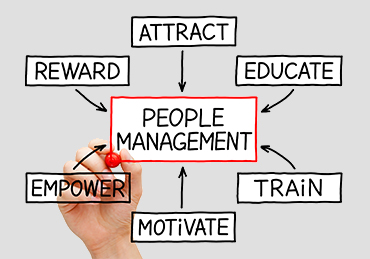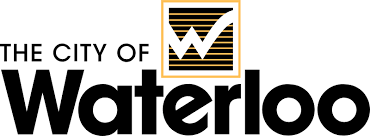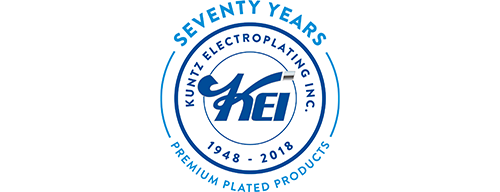Observant
Approachable
Open-minded
Supportive
Persuasive
Committed
Trustworthy
Non-judgemental
Honest
Is your organization looking for Management and Supervisory Training?
We offer
Effective business communication & Conflict management training for
Managers and Supervisors
Coaching: extrinsic motivation for genuine improvement
Long gone are the days when managers spent their time only in planning, organizing, and controlling the workflow in their department. Now more than ever, managers are required in addition, to use professional and appropriate communication with those who report to them to gain trust, respect, and credibility. It is imperative that managers focus their energy on developing healthy and positive relationships with their teams so as to cultivate commitment and enhance productivity, all in an effort to improve organizational performance.
Coaching is another example of extrinsic motivation and in addition to a solid training commitment, is the most effective tool to create genuine and lasting improvements in others. Managers as coaches, assume the responsibility to help their employees improve their proficiency. Coaches use conflicts that come up on the job as opportunities to work with their people in building skills and intrinsic motivation.
Coaches use today’s conflicts as opportunities to develop greater strengths in their employees. Coaching helps employees examine their behaviours and performance, and assists them in planning how to work better and smarter. Coaching also helps develop self-reliance in others and is the driving force behind self-esteeming relationships.
A coach is someone who displays the following qualities;
Objective
Willing to take the time
A good listener
Communicative
Respectful
Confidential
Ethical
Understanding
OUR EXPERTISE
Since 1994, the MDG has partnered with organizations that are committed to develop their management and supervisory teams. The company is owned and operated by Robert Côtes, who brings over 30 years of training and employee development experience.
OUR APPROACH
The MDG offers real training solutions to businesses whose objective is to develop and maintain positive and functional cultures. The way to achieve this is to train (re-train) and support Leadership teams as to;
- Standardize communication
- Operate from the same page using a common language
- Ensure consistency with respect to management and supervisory “best practices”
OUR COMMITMENT
There are no “shortcuts” or “quick fixes” when it comes to training. To achieve “best practices”, an organization should commit to a long term development strategy. That is precisely what the MDG offers; long term partnerships to affect lasting, positive change so as to ensure a return on your training investment.
HIGH IMPACT DEVELOPMENT
Our clients reach their development objectives for 3 reasons. First, our learning system is relevant, dealing with today’s management issues, and contains both educational (theory) and training (application) sessions and combined, form a powerful experiential, “learn by doing” system. The second reason for our client’s success is the facilitator’s ability to engage participants and create a supportive, fun yet candid learning environment. The third and last reason is our client’s commitment to a long term development effort, for change is not an overnight process. It takes time.
Step 1 (Core Program)
Prerequisite for Steps 2 & 3

Business Communication an Interpersonal Skills Management Learning System
Business Communication an Interpersonal Skills Management Learning System teaches powerful communication strategies that are used to approach, manage, and ultimately resolve day-to-day conflicts and “people issues”. The program is made up of three modules, each is a building block targeting specific communication and management skills. Training is conducted in groups of no more than 10 participants.
Step 2 (Follow-up)
Prerequisite; Step 1

Refresher Workshop
Graduates are invited back to the training room for a full review of the concepts, skills, approaches, and strategies imparted in the core program (step 1). The workshop consists of two – 3.5hr sessions with a maximum of 10 participants. The first session focuses on the review part of the effort while session 2 concentrates on activities that give graduates the opportunity to demonstrate the strategies learned in Step 1.
Step 3 (Optional)
Prerequisite; Step 1

Performance Development a Leadership Approach to High Performance
Most organizations have at their disposal a variety of tools to measure performance levels, compare them to expected ones, and arrive at ways to achieve peak performance from their employees; all in an effort to improve and maintain organizational performance. This paper trail is indispensable and requires consistent application and monitoring in order to be effective and reach the intended objectives.
What Graduates Are Saying
(The following comments are taken from actual graduate evaluations)
Paul C.
Quality Auditor
"Your insight and experience were appreciated. You spoke to us as adults and I learned new skills and honed others."
Neil W.
Marketing
"Course is very structured. Method makes sense. It works and I’m using it. It benefits everyone."
Eva M.
Administrator
"This interactive program provided me with knowledge and tools on better managing difficult situations that arise in every workplace and in personal life."
Jodie H.
Front-line Supervisor
"I believe this will aid in my skills as a supervisor & improve communication in the professional world."
Amanda N.
Manager
"The facilitator is very knowledgeable and practices what he preaches."
Caralee G.
Supervisor
"Well facilitated, great engagement. I’m only upset that not everyone can attend to learn the skill sets taught(to have everyone on the same page)."
Shahrzad K.
Engineer
"Knowing the structure of how to communicate is a great tool for me to improve my communication at workplace. Because of the role-plays and getting pushed out of my comfort zone, it will be a lot easier for me to deal with different situations at work place."
Keshia W.
Manager
"My emails have improved significantly. I am getting prompt and targeted replies. I am much better @ keeping meetings focused on the objective(s)."
Oneil S.
Supervisor
"The facilitator was very clear, concise, and approachable. He did an amazing job."
Frederick S.
Supervisor
"Great concrete ways to go about managing difficult conversations. General awareness of my communication skills and to understand where others are coming from."
Dawn Z.
Manager
"Learned different communication skills to deal with difficult situations. Feel more prepared to deal with them."
Emanuel S.
Manager
"Rob is an excellent instructor. Made me feel very comfortable about myself and how to deal with situations."
Linda R.
Manager
"We have practiced the skills during/between the sessions. It works & I will keep doing it daily in my interactions with others."
Judi D.
Supervisor
"I am coming away with ways to deal with situations that have been problematic for me in the past. I have a new view on steps I need to ensure effective communication as a supervisor."
Shawnah K.
Inside sales
"Role playing – being put into a situation and having to solve it with assistance takes the fear out of using these new skills in my environment."
Jeremy B.
Manager
"Training was very beneficial to the team and to help unify our strengths as leaders. Training will help to ensure consistency in our interactions with members. Confidence in abilities to communicate has improved with the team."
Harry L.
Manager
"Excellent knowledge and explanations – well done. Great Leadership and explaining how this training can be transferred towards improving the business."
Greg A.
Assistant Manager
"It was well done. Thorough, specific, to the point. Content was easy to read, understand, and implement. Very pleased."
Partial Client List









